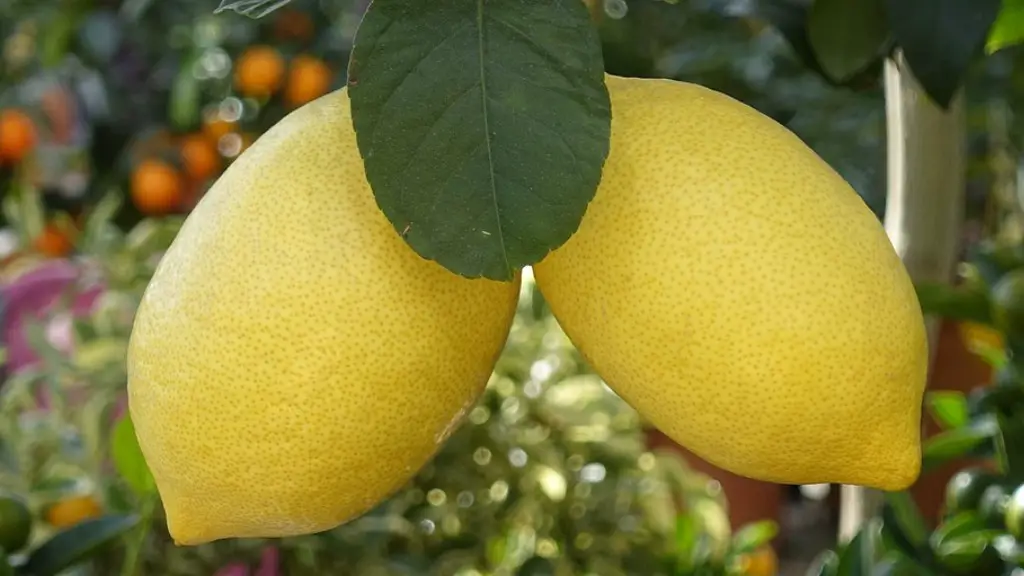Caterpillars can be a serious nuisance on lemon trees, consuming foliage at an alarming rate. Knowing how to get rid of caterpillars is an essential part of caring for your lemon tree. This article outlines some simple methods for ridding your tree of these pesky critters. It’s important to note that different caterpillars may require different removal methods, so it’s important to identify the type of caterpillar you’re dealing with before beginning removal.
The simplest and most effective way to get rid of caterpillars on lemon trees is to remove them manually. The use of gloves is recommended, as some caterpillar species may carry fluids or hairs that cause skin irritation. As these critters are quite active, it is advisable to inspect the tree regularly and remove any caterpillars that are found. Laying a tarp underneath the tree can also help to catch any caterpillars that you may have missed. It is important to be careful when handling caterpillars, as some species may cause serious harm if not handled properly.
Another effective method for controlling caterpillars on a lemon tree is to use an insecticidal soap spray. These insecticides work by disrupting the caterpillars’ body functions and causing them to stop feeding. It is important to note that these sprays are not effective against all species of caterpillars so it is important to research which product is best for your particular pest before purchasing. It’s also important to ensure that the product you choose is safe to use on edible fruits. The soap spray should be applied directly to the affected area, taking care to avoid contact with the lemon tree’s blooms and fruits.
Using parasitic nematodes to rid a lemon tree of caterpillars can also be effective. These nematodes are tiny worms that enter the caterpillar and feed off their body fluids or attack them from the inside out, eventually killing the caterpillar. It is important to note that these nematodes do not attack other types of insects, so they are a safe and effective option for controlling caterpillars in your lemon tree. Additionally, there is no risk of overpopulation because these nematodes will die off once the infestation is eliminated.
Finally, a Bacillus thuringiensis (Bt) based product can also be used to get rid of caterpillars on lemon trees. These products contain a bacteria that is lethal to caterpillars, but harmless to other beneficial insects and birds. These products should be applied directly to the affected area and can provide long-term protection by killing off the caterpillars and their eggs. As it is a safe option, this method also poses no risk of harm to humans or other beneficial organisms.
Pheromone Traps
Pheromone traps are another way to control caterpillars on lemon trees. As these traps contain a special attractant, they can draw in and trap caterpillars, reducing the number of caterpillars that are able to access the tree. The traps can also be used to identify the type of caterpillar that is infesting your tree, allowing for a better targeted removal approach. Pheromone traps should be placed around the tree and should be checked regularly to ensure that they are still effective.
Barriers
Barriers can also be used to prevent caterpillars from accessing a lemon tree. By wrapping a netting around the trunk of the tree, it can be difficult for caterpillars to access the tree and feed on its foliage. This prevention method can also be combined with manual removal and topical treatments for a more effective approach. The netting should be removed after the season is finished in order to allow for proper air circulation and light penetration.
Natural Predators
Attracting natural predators, such as birds and beneficial insects, can also be an effective method for controlling caterpillars on a lemon tree. To attract these predators, it is important to provide them with a food source, such as flowering plants, shrubs, and trees that are rich in pollen and nectar. Additionally, installing bird houses, nesting boxes, and bird baths in the area can help to create a hospitable environment. These natural predators can help to reduce the number of caterpillars on a lemon tree, eliminating the need for more heavy-duty treatments.
Insecticides
Insecticides can also be used to control caterpillars on a lemon tree if manual removal and biological treatments are not effective. It is important to note that these treatments can be toxic to beneficial insects and birds, as well as humans and pets, so they should be used with caution. Additionally, insecticides can be difficult to apply correctly and can cause damage to the tree if not used properly. If you choose to use insecticides, it is recommended that you research the product carefully beforehand and select one that is safe for use on edible fruits.


